Search

“1982” is a life-affirming coming-of-age tale set at an idyllic school in Lebanon’s mountains on the eve of a looming invasion. It unfolds over a single day and follows an 11-year-old boy’s relentless quest to profess his love to a girl in his class. As the invasion encroaches on Beirut, it upends the day, threatening the entire country and its cohesion. Within the microcosm of the school, the film draws a harrowing portrait of a society torn between its desire for love and peace and the ideological schisms unraveling its seams. In his debut feature, director Oualid Mouaness delivers an ode to innocence in which he revisits one of the most cataclysmic moments in Lebanon’s history through the lens of a child and his vibrant imagination. The film demonstrates the complexities of love and war, and the resilience of the human spirit.
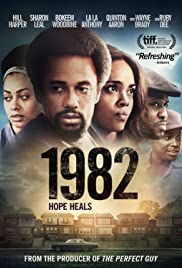
1982, a film inspired by true events at the onset of the crack epidemic in Philadelphia, tells the story of a father and his efforts to protect his gifted daughter from the insidious epidemic which has literally come home via her drug-addicted mother. As his wife becomes more distant and unreliable, he struggles to raise his daughter on his own, while still striving to help his wife become clean. In the process, he learns some hard truths about his marriage and his life, which will ultimately test him as a parent, a husband, and a man
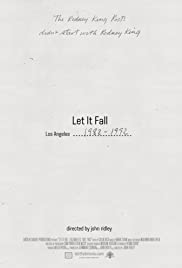
An in-depth look at the culture of Los Angeles in the ten years leading up to the 1992 uprising that erupted after the verdict of police officers cleared of beating Rodney King.

The raising of King Henry VIII’s flagship Mary Rose in 1982 remains one of the most significant events in the history of maritime salvage. Comparable to the recovery of the 17th century Swedish warship Vasa in 1961, the climax of this complex and expensive operation was watched by around 60 million people worldwide. But 300 reels of film recently found in the archive of The Mary Rose Trust provide additional insight into the operation.

In the summer of 1982, a group of campers was horribly slaughtered at Camp Arapaho in the sleepy little town of Woodland Hills. The 10 gruesome murders were blamed on Alex Black, a mysterious man believed to have been the son of Satan himself, whom the townspeople had hunted down and lynched nearly 20 years prior. A young woman named Adrienne was able to defeat Alex and put a stop to the killing spree.

Many people first became aware of the Shatila refugee camp in Lebanon after the shocking and horrific Sabra-Shatila massacre that took place there in 1982. Located in Beirut’s “belt of misery,” the camp is home to 15,000 Palestinians and Lebanese who share a common experience of displacement, unemployment and poverty. Fifty years after the exile of their grandparents from Palestine, the children of Shatila attempt to come to terms with the reality of being refugees in a camp that has survived massacre, siege and starvation. Director Mai Masri focuses on two Palestinian children in the camp: Farah, age 11 and Issa, age 12. When these children are given video cameras, the story of the camp evolves from their personal narratives as they articulate the feelings and hopes of their generation.

Beirut, 1982: a young Palestinian refugee and an Israeli fighter pilot form a tentative bond in their attempt to make their way across war-torn Lebanon back to their home.

1982, Poland. A translator loses her husband and becomes a victim of her own sorrow. She looks to sex, to her son, to law, and to hypnotism when she has nothing else in this time of martial law when Solidarity was banned.

The first-ever registered encounter by the Mumbai Police, which took place on November 1, 1982.

A sunbaked Sicilian town in the summer of 1982 provides the vivid backdrop to this tender romantic drama about two teenagers who fall in love, but much to the disapproval of those around them. Gianni is a handsome but shy teen who works as a car mechanic at his stepfather’s garage but is mercilessly taunted by the macho townsmen for being a homosexual. With his family life no better, Gianni withdraws into himself until one day he meets Nino, a curly-haired boy with an infectious smile. As the two become close and fall in love, the moral rumblings from their families and neighbors begin to erupt. With all against them, the boys decide to make a stand.

Spain, 1982. Andrés Expósito, a young police inspector, accepts a posting in Denia, a small town on the Mediterranean coast, in the hope of leading a quieter life and that the natural environment will help improve the fragile health of his daughter; but once in his new post he becomes involved by chance in the investigation of the strange death of the inspector he has come to replace.
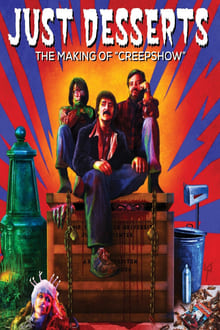
Details the making of Stephen King & George A. Romero’s 1982 horror anthology classic, from conception through to completion.
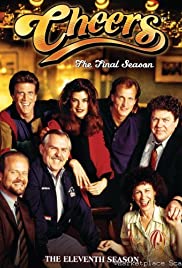
Cheers is an American sitcom television series that ran for 11 seasons from 1982 to 1993. It was produced by Charles/Burrows/Charles Productions in association with Paramount Network Television for NBC and created by the team of James Burrows, Glen Charles, and Les Charles. The show is set in a bar named Cheers in Boston, Massachusetts, where a group of locals meet to drink, relax, and socialize. The show’s theme song, written and performed by Gary Portnoy, and co-written with Judy Hart Angelo, lent its famous refrain, “Where Everybody Knows Your Name”, as the show’s tagline.
After premiering on September 30, 1982, it was nearly canceled during its first season when it ranked last in ratings for its premiere. Cheers, however, eventually became a highly rated television show in the United States, earning a top-ten rating during 8 of its 11 seasons, including one season at #1. The show spent most of its run on NBC’s Thursday night “Must See TV” lineup. Its widely watched series finale was broadcast on May 20, 1993, and the show’s 275 episodes have been successfully syndicated worldwide. Nominated for Outstanding Comedy Series for all eleven of its seasons on the air, it has earned 28 Emmy Awards from a then-record 117 nominations. The character Frasier Crane was featured in his eponymous spin-off show, which later aired up until 2004 and included guest appearances by virtually all of the major and minor Cheers characters.

Quincy, M.E. is an American television series from Universal Studios that aired from October 3, 1976, to September 5, 1983, on NBC. It stars Jack Klugman in the title role, a Los Angeles County medical examiner.
Inspired by the book Where Death Delights by Marshall Houts, a former FBI agent, the show also resembled the earlier Canadian television series Wojeck, broadcast by CBC Television. John Vernon, who played the Wojeck title role, later guest starred in the third-season episode “Requiem For The Living”. Quincy’s character is loosely modelled on Los Angeles’ “Coroner to the Stars” Thomas Noguchi.
The first half of the first season of Quincy was broadcast as 90-minute telefilms as part of the NBC Sunday Mystery Movie rotation in the fall of 1976 alongside Columbo, McCloud, and McMillan. The series proved popular enough that midway through the 1976–1977 season, Quincy was spun off into its own weekly one-hour series. The Mystery Movie format was discontinued in the spring of 1977.
In 1978, writers Tony Lawrence and Lou Shaw received an Edgar Award from the Mystery Writers of America for the second-season episode “…The Thighbone’s Connected to the Knee Bone…”. Many of the episodes used the same actors for different roles in various episodes. For example, an actor who plays a crooked Navy captain also plays a ballistics expert in several of the later episodes. Using a small “pool” of actors was a common production trait of many Glen A. Larson TV programs. Before becoming a regular cast member as Quincy’s girlfriend-wife Dr. Emily Hanover in the 1982-1983 season, Anita Gillette had portrayed Quincy’s deceased first wife Helen Quincy in a flashback in a 1979 episode “Promises to Keep”.
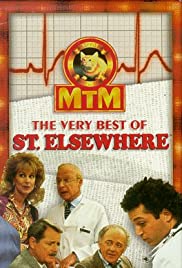
St. Elsewhere is an American medical drama television series that originally ran on NBC from October 26, 1982 to May 25, 1988. The series starred Ed Flanders, Norman Lloyd and William Daniels as teaching doctors at a lightly-regarded Boston hospital who gave interns a promising future in making critical medical and life decisions. The series was produced by MTM Enterprises, which had success with a similar NBC series, the police drama Hill Street Blues, during that same time; both series were often compared to each other for their use of ensemble casts and overlapping serialized storylines. St. Elsewhere was filmed at CBS/MTM Studios, which was known as CBS/Fox Studios when the show began; coincidentally, 20th Century Fox wound up acquiring the rights to the series when it bought MTM Enterprises in the 1990s.
Known for its combination of gritty, realistic drama and moments of black comedy, St. Elsewhere gained a small yet loyal following over its 6-season, 137-episode run; the series also found a strong audience in Nielsen’s 18-49 age demographic, a young demo later known for a young, affluent audience that TV advertisers are eager to reach. The series also earned critical acclaim during its run, earning 13 Emmy Awards for its writing, acting, and directing. St. Elsewhere was ranked #20 on TV Guide’s 2002 list of “The 50 Greatest TV Shows of All Time.”, with the magazine also selecting it as the best drama series of the 1980s in a 1993 issue.

Wheel of Fortune is an American television game show created by Merv Griffin. The show features a competition in which contestants solve word puzzles, similar to those used in Hangman, to win cash and prizes determined by spinning a giant carnival wheel. The original daytime version aired on NBC from January 6, 1975, to June 30, 1989. It was on CBS from July 17, 1989, until January 11, 1991, and returned to NBC from January 14 to September 20, 1991, when it was canceled permanently. The daily syndicated version of the series premiered on September 19, 1983.
The daytime version was originally hosted by Chuck Woolery and Susan Stafford, with Charlie O’Donnell as its announcer. O’Donnell left in 1980, Woolery in 1981, and Stafford in 1982; they were replaced, respectively, by Jack Clark, Pat Sajak, and Vanna White. After Clark’s 1988 death, M. G. Kelly took over briefly as announcer until O’Donnell returned in 1989; O’Donnell remained on the daytime version until its cancellation, and continued to announce on the syndicated show until his 2010 death, after which Jim Thornton replaced him. Sajak left the daytime version in January 1989 to host the late-night talk show The Pat Sajak Show, and was replaced on that version by Rolf Benirschke. Bob Goen replaced Benirschke when the daytime show moved to CBS, then remained as host until the daytime show was canceled altogether. The syndicated version has been hosted continuously by Sajak and White since its inception.
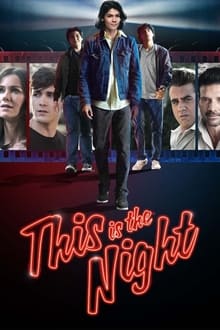
In the summer of 1982, as all of Staten Island anticipates the opening of a blockbuster boxing movie, an Italian-American family must confront its greatest challenges.
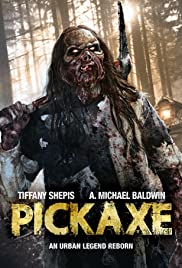
1982: The survivors of a series of brutal killings in a small town thought mass murderer Alex Black was dead and buried after the townspeople put an end to him. But teenagers experimenting with the occult awaken the monster from his grave and he begins another rampage of terror with his favorite tool, a pickaxe. Only those who have faced him before have any chance of stopping Alex Black once and for all.
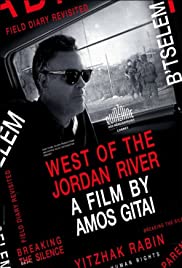
Amos Gitai returns to the occupied territories for the first time since his 1982 documentary FIELD DIARY. WEST OF THE JORDAN RIVER describes the efforts of citizens, Israelis and Palestinians, who are trying to overcome the consequences of occupation. Gitai’s film shows the human ties woven by the military, human rights activists, journalists, mourning mothers and even Jewish settlers. Faced with the failure of politics to solve the occupation issue, these men and women rise and act in the name of their civic consciousness. This human energy is a proposal for long overdue change.
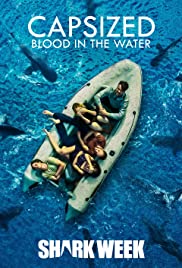
Based on the harrowing true story of an October 1982 shark encounter. After a yacht bound for Florida capsizes during an unexpected storm, its crew is left to drift for days in the chilling waters of the Atlantic where they become prey to a group of tiger sharks. With the hope of rescue dwindling, the crew must do everything in their power to survive as the sharks continue to hunt them.
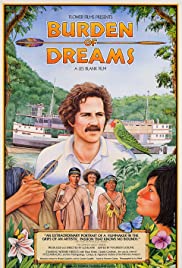
German director Werner Herzog begins work on his 1982 epic “Fitzcarraldo” but soon runs into serious setbacks, from casting problems to his own stubborn refusal to use special effects. After having to reshoot much of the film because the lead actor was recast, his crew must then haul an old-fashioned steamboat over a mountain using manpower alone. With a resolve bordering on insanity, Herzog struggles to realize his vision, vowing to see the film completed — even if it leads to his undoing.
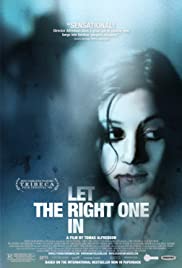
Set in 1982 in the suburb of Blackeberg, Stockholm, twelve-year-old Oskar is a lonely outsider, bullied at school by his classmates; at home, Oskar dreams of revenge against a trio of bullies. He befriends his twelve-year-old, next-door neighbor Eli, who only appears at night in the snow-covered playground outside their building.

In 1982, three 11 year-olds in Mississippi set out to remake their favorite film: Raiders of the Lost Ark. It took seven turbulent years that tested the limits of their friendship and nearly burned down their mother’s house. By the end, they had completed every scene except one… the explosive airplane scene. 30 years later, they attempt to finally realize their childhood dream by building a replica of the 75 foot “Flying Wing” plane from Raiders in a mud pit in the backwoods of Mississippi… and then blow it up! This is the story behind the making of what is known as “the greatest fan film ever made.”
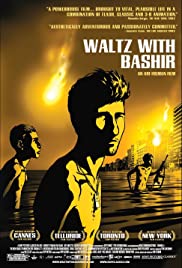
Much awarded animated documentary, in which director and Israeli army veteran Ari Folman interviews friends and former soldiers about their memories of the 1982 Lebanon war and especially the Sabra and Shatila massacre in Beirut. The usage on animation enabled Folman to illustrate their personal memories and dreams.
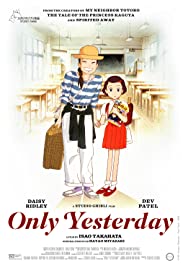
It’s 1982, and Taeko is 27 years old, unmarried, and has lived her whole life in Tokyo. She decides to visit her family in the countryside, and as the train travels through the night, memories flood back of her younger years: the first immature stirrings of romance, the onset of puberty, and the frustrations of math and boys. At the station she is met by young farmer Toshio, and the encounters with him begin to reconnect her to forgotten longings. In lyrical switches between the present and the past, Taeko contemplates the arc of her life, and wonders if she has been true to the dreams of her childhood self.
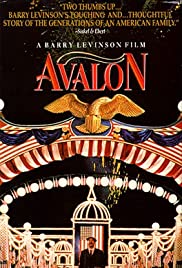
Avalon is the third in Levinson’s semi-autobiographical series of four “Baltimore Films”: Diner (1982), Tin Men (1987), Avalon (1990), and Liberty Heights (1999). The film is set in Baltimore in the early 1950s and explores the themes of Jewish assimilation into American life.
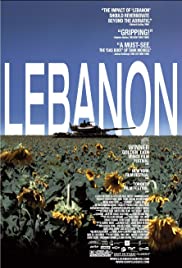
June, 1982 – The First Lebanon War. A lone tank and a paratroopers platoon are dispatched to search a hostile town – a simple mission that turns into a nightmare. The four members of a tank crew find themselves in a violent situation that they cannot contain. Motivated by fear and the basic instinct of survival, they desperately try not to lose themselves in the chaos of war.
Launched in 1982 by three friends in a Houston diner, Compaq Computer set out to build a portable PC to take on IBM, the world’s most powerful tech company. Many had tried cloning the industry leader’s code, only to be trounced by IBM and its high-priced lawyers. Explore the remarkable David vs. Goliath story, and eventual demise, of Compaq, an unlikely upstart who altered the future of computing and helped shape the world as we know it today.
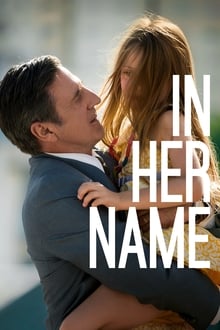
In 1982, André Bamberski learns about the death of his 14 year-old daughter, Kalinka, while she was on vacation with her mother and stepfather in Germany. Convinced that Kalinka’s death was not an accident, Bamberski begins to investigate. A botched autopsy report raises his suspicions and leads him to accuse Kalinka’s stepfather, Dr Dieter Krombach, as the murderer.
Unable to indict Krombach in Germany, Bamberski attempts to take the trial to France, where he will dedicate his life to Kalinka’s justice and the imprisonment of Krombach.
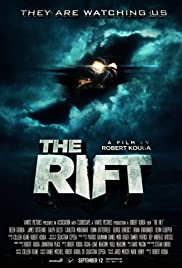
Since a few decades they were watching us. Studying us. What are they? Nobody knows. Nobody but Ivan Petrenko Karkarov. The Russian physicist started to study a phenomenon which was occurring since several decades. In 1982 he found an answer to the strange phenomenon but before he could tell anyone he mysteriously vanished. 30 years later, in Newell Iowa, Dean Hollister seems to be a normal guy until strange radar anomalies appear throughout the world. All of a sudden something starts to happen at the sky, black rifts appear. Behind those rifts something is moving. It’s watching us.

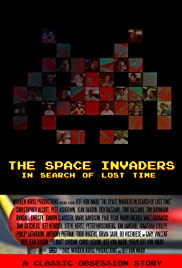
Beginning with Space Invaders in 1978, arcade games began to appear everywhere. By 1982, there were 13,000 dedicated arcade locations across North America. It was the Golden Age of Arcade Games, generating $3.2 billion dollars in 1983. By 1985, revenue had fallen 97%. Atari declared bankruptcy. Arcades closed. Most of the old games were converted or destroyed. A few were packed into warehouses where they remained, largely forgotten, for at least another decade. This is the story of arcade video games, and the generation who grew up in the arcades attempting to collect and preserve their fondest memories.
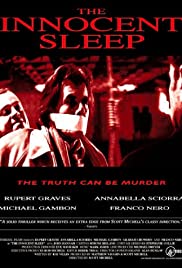
Inspired by the 1982 Roberto Calvi Affair in which an Italian banker was found hanging from a bridge across the River Thames, the story follows Alan, a man from Northern England who is homeless after the loss of his wife and job. One night while sleeping in a deserted building, Alan witnesses the murder of a high-profile businessman. He attempts to leave the scene unnoticed, but the killers realize that someone has seen them commit the crime. He goes to the police only to discover that one of the killers is leading the case. To stay alive, Alan recruits the help of Billie Hayman, an American journalist, to cover his story.
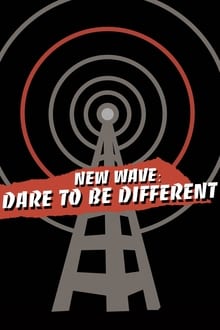
U2, Talking Heads, Depeche Mode, Blondie, Duran Duran, Tears for Fears, The Clash, The Cure: Over half a billion records sold but you may never have heard of them if not for a small suburban radio station on Long Island, NY: WLIR. In August, 1982, a small group of radio visionaries knew they couldn’t compete with the mega-stations in New York City. With one brave decision, they changed the sound of radio forever. Program Director Denis McNamara, the ‘LIR crew and the biggest artists of the era tell the story of how they battled the FCC, the record labels, mega-radio and all the conventional rules to create a musical movement that brought the New Wave to America.
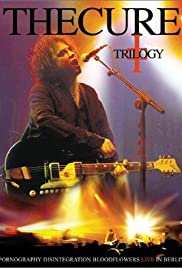
The Cure: Trilogy is a double live album video by The Cure, released on two double layer DVD-9 discs, and later on a single Blu-Ray disc. It documents The Trilogy Concerts, in which the three albums, Pornography (1982), Disintegration (1989) and Bloodflowers (2000) were played live in their entirety one after the other each night, the songs being played in the order in which they appeared on the albums. Trilogy was recorded on two consecutive nights, 11–12 November 2002, at the Tempodrom arena in Berlin. A third, previous Trilogy concert in Brussels on 7 November was not used.